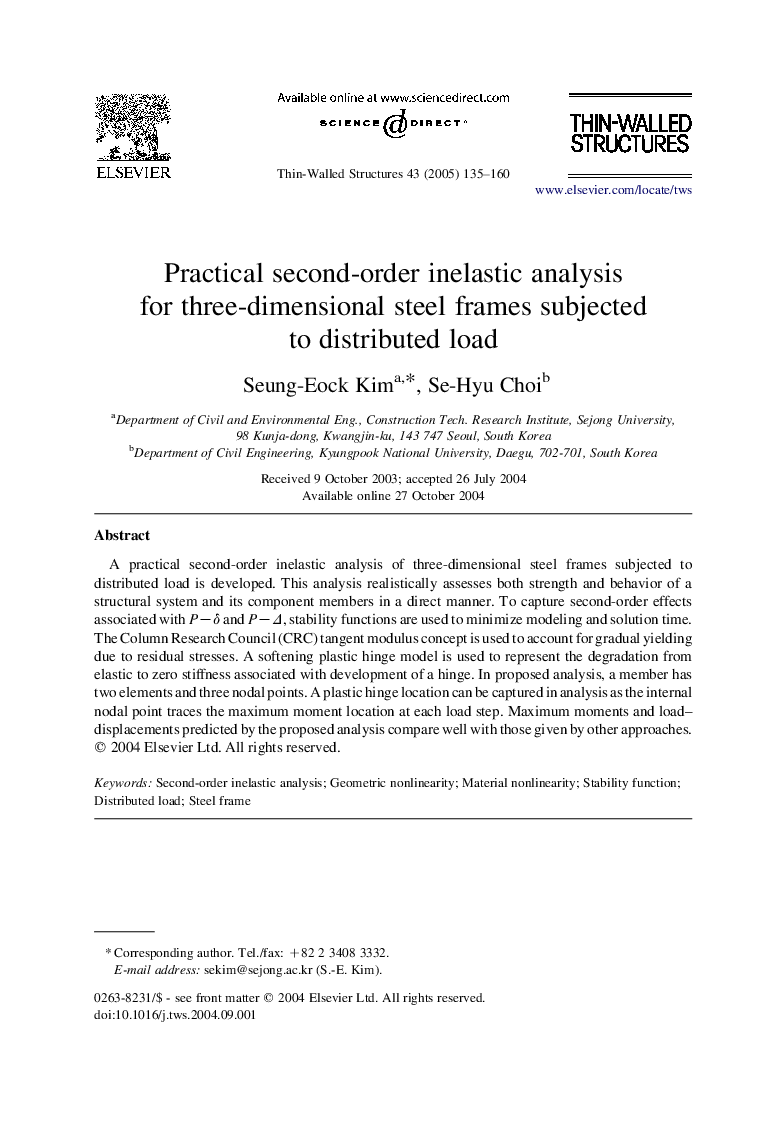| Article ID | Journal | Published Year | Pages | File Type |
|---|---|---|---|---|
| 10295856 | Thin-Walled Structures | 2005 | 26 Pages |
Abstract
A practical second-order inelastic analysis of three-dimensional steel frames subjected to distributed load is developed. This analysis realistically assesses both strength and behavior of a structural system and its component members in a direct manner. To capture second-order effects associated with Pâδ and PâÎ, stability functions are used to minimize modeling and solution time. The Column Research Council (CRC) tangent modulus concept is used to account for gradual yielding due to residual stresses. A softening plastic hinge model is used to represent the degradation from elastic to zero stiffness associated with development of a hinge. In proposed analysis, a member has two elements and three nodal points. A plastic hinge location can be captured in analysis as the internal nodal point traces the maximum moment location at each load step. Maximum moments and load-displacements predicted by the proposed analysis compare well with those given by other approaches.
Keywords
Related Topics
Physical Sciences and Engineering
Engineering
Civil and Structural Engineering
Authors
Seung-Eock Kim, Se-Hyu Choi,
